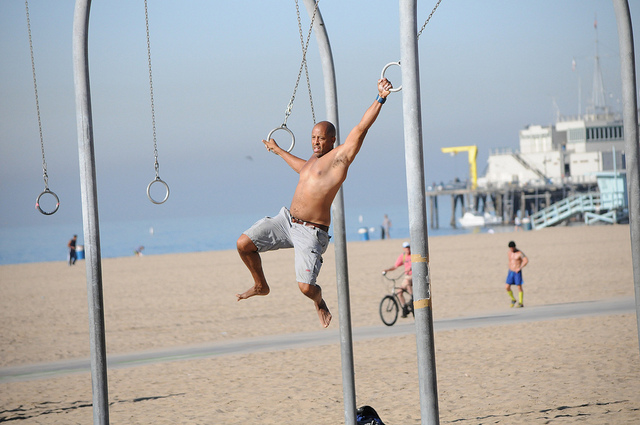Shoulder dislocation injuries can be very disruptive to your fitness regime - not to mention painful! And, although carrying on with your regular workout routines is going to be difficult, you can still stay fit. In this brief guide, I’m going to go through what you can expect from a shoulder dislocation injury. Let’s get started with some basic info.
The injury
First of all, the shoulder is one of the most mobile joints in your body - but this can come at a cost. When it comes to contact sports like football, basketball, or martial arts, it can be vulnerable to being popped out of its socket. I won’t beat around the bush - it can cause extreme pain. And, when it has happened once, it is more likely to occur again. So, it’s important that when you start working out again, you don’t overdo it.
Treatment
The first step in your treatment is to get your shoulder back in place. Again, this can be a painful experience, even when a skilled physician or nurse is performing the task. Take a look at this shoulder dislocation treatment by Dr Siow Hua Ming to see what you can expect. You will wear a sling, and you won’t be able to move your shoulder for a while. You can also expect a fair amount of swelling, pain, and discomfort. It’s important to keep your shoulder immobile during this period, which can last up to a couple of weeks. Once it subsides, you can start with some rehab exercises.
Exercises
There is a range of exercises that can help you recover quicker from a shoulder dislocation. In the initial stages, you should try isometric exercises - or static contractions. These are exercises that work the joint without moving it and are perfect for building a little strength. The next stage is to strengthen the muscles around the shoulder with internal rotation exercises. These involve moving the arm in front of the body, rather than the outside. Only then can you start external rotations - such as pushing out with dumbbells.
Basic fitness
Your fitness levels are going to drop when you have any dislocation, due to the fact you need to rest the injury. However, with good strapping in place, there are a few ways you keep fit - to a certain extent. Running will be out of the question for a while, but you might feel comfortable with brisk walking. You might be surprised how many calories you can burn off. One thing you have to watch out for is your heart rate. Once it starts pumping fast, it can cause throbbing in your shoulder, so if this starts happening, slow things down a little. As the shoulder pain begins to recede, you can begin to up the intensity of your exercise. Just be careful not to overdo it, and if you have any shoulder pain, stop.
Diet
Finally, don’t forget to adjust your diet to suit the lower levels of exercise. If you’re still consuming a lot of calories to support a serious training program, it’s just going to make you put on weight. And, that means it’s going to take you far longer to get back to your original condition. Good luck with the recovery!

